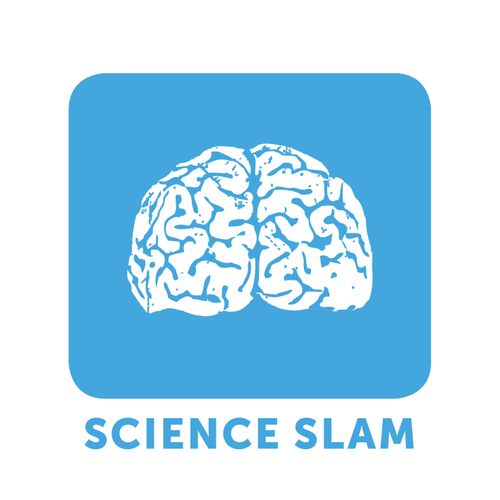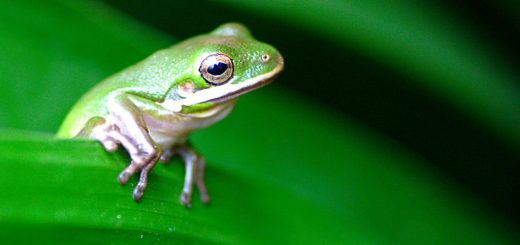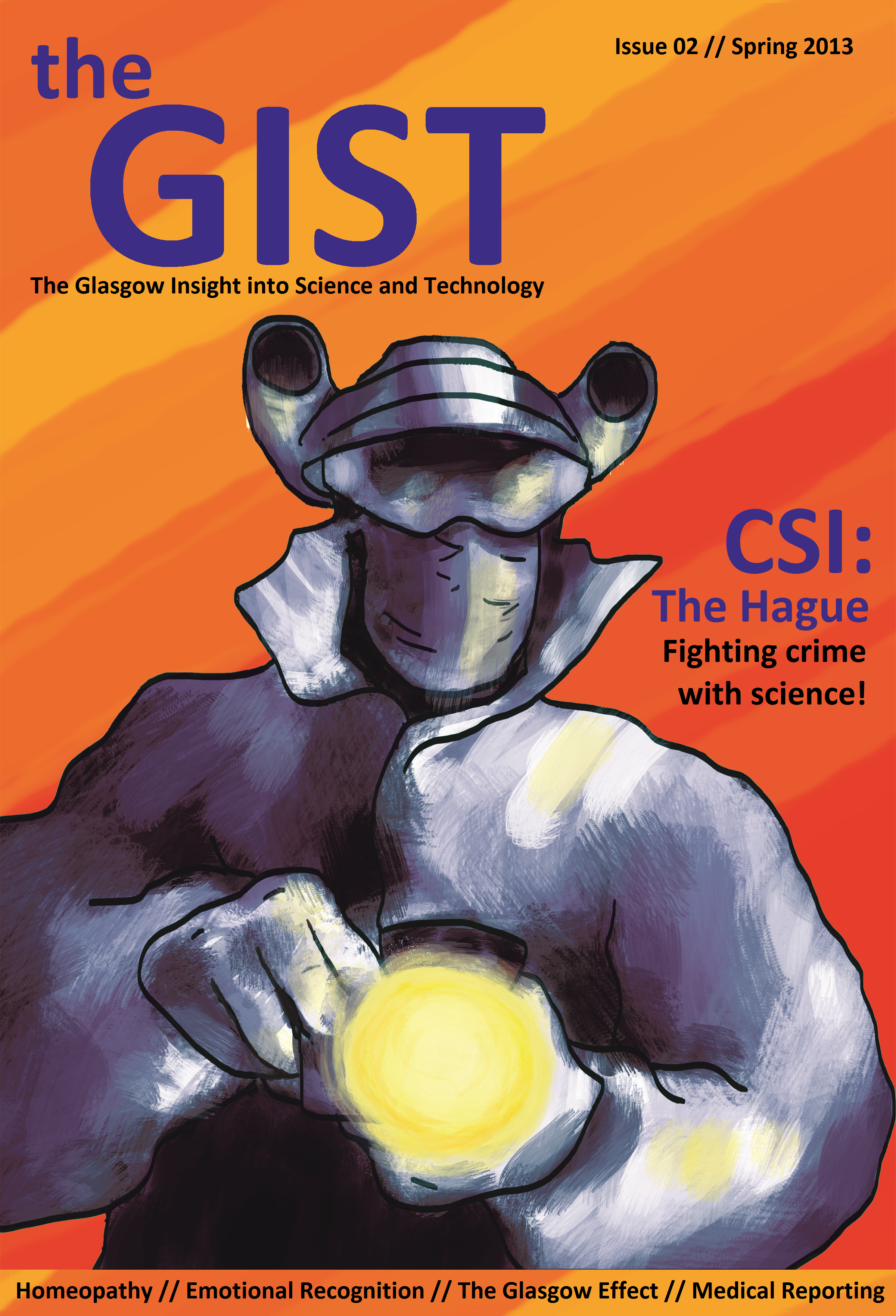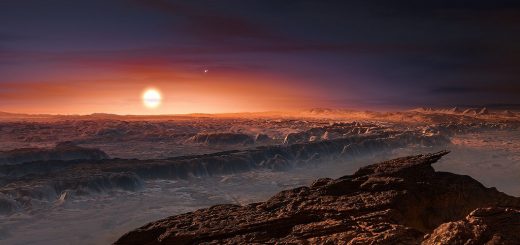Science Slam IV — Thinking Outside the Tesseract

The University of Glasgow’s Science Slam is an annual event held in the picturesque surroundings of Cottiers theatre in the Hyndland area of the city. Now in its fourth year, the event represents a popular blend of science and communication which has resulted in sell-out performances for the past two years. The premise is simple, yet unique — seven PhD researchers from across the College of Science and Engineering have a ten minute slot in which to convey the importance of their research in as entertaining and funny a manner as possible, with a £500 prize at stake. These flamboyant and often hilarious performances can be a sharp contrast to the typical PowerPoint presentations that can struggle to hold the attention of scientists at conferences around the circuit. The interaction of the presenters with witty host, Sian Bevin, is washed down with copious amounts of Science Slam cocktails to provide the right combination for an entertaining night of science.
The first of the seven presenters to take to the stage was Rair Macedo of the School of Physics and Astronomy, who ensured the audience followed the rather complex theory behind hyperbolic mirrors by using topical movies anecdotes. Rair’s research is centred on the manipulation of bends that occur naturally in light. Potential applications of his research include the creation of products previously only seen in the movies, for example, the magical invisibility cloak in Harry Potter could now become a reality. He also described more moderate applications for us mere muggles, including using hyperbolic mirrors to direct heat away from electronic devices in order to prevent fires which occur as a result of them overheating.
Bianca Cavazzin from the School of Geographical and Earth Sciences was next up, with her description of how microbiological techniques can be used to map the climate history of the planet. Bianca explained that by analysing the cell membranes of bacteria isolated from soil deep below the waters of the Lake District, she could associate the bacteria to a certain climate or temperature, and therefore, use bacteria as fossil-like clues to map temperatures over the last thousand years. Remarkably, the results correlate with major weather events that we know have occurred historically, such as the ‘mini-ice age’. Despite using breakfast cereal analogies to describe the way in which cell membranes are isolated from bacteria, Bianca’s presentation was more content-focused than the other performers. However, from a microbiologist’s perspective, the idea is fascinating, and potentially represents an innovative weapon that can aid in the fight against climate change.
The next presenter was Leon Franzen, from the School of Psychology, who aimed to change the common perspective of the dyslexic brain. Leon explained that, in contrast to what is commonly believed, dyslexics are generally more successful in many fields. This is due to compensation mechanisms developed from an early age which trains affected people to think outside the box and use new areas of the brain to problem solve. This fascinating information combined with examples from the world of celebrity and his own childhood, made for a captivating presentation.
Ermes Toninelli from the School of Physics and Astronomy kicked off the post-interval proceedings with an explanation of the important research his group are carrying out towards the development of novel gravity meters. These have the ability to translate the gravitational presence of surrounding bodies into the movement of a closely observed object — referred to as a flag. Ermes described the potential applications of his research to include better predictions of ‘sink holes’ and even advantages in Pokemon Go! Despite the theory being highly complex, Ermes effectively used humour to keep the attention of the audience, and produced many laughs along the way.
Commercial aircraft have remained identical in structure since the beginning of air travel in the 1950’s. However, research by our next presenter, Shaun Skinner of the School of Engineering, aims to change this. The new approach used by Shaun’s team uses artificial intelligence which mimics the principles of evolutionary biology to ‘breed’ a more efficient aircraft. At first, the concept seemed difficult to understand, however, Shaun’s interactive use of paper planes with the audience gave a visual guide to explain how two distinctive parts which have proven useful can be combined to form a hybrid using computer modelling. This idea has become so successful that a prototype has been built to be tested in a wind tunnel this summer. Shaun’s unique style of audience participation was the highlight of this detailed and informative presentation.
The bubbly personality of Nivedha Radhakrishnan from the School of Engineering was quick to win audiences during her presentation detailing the work of her group towards a more accurate measurement of electrical current. Nivedha explained that there is a race to produce a new device which measures current more accurately, before units of measurements are redefined in 2018. This device named ‘The Single Electron Transistor’ could have a whole range applications, but specifically, it could be used to read bases of the genetic code more accurately whilst sequencing DNA. The University of Glasgow is currently a leader in this scientific race, as it has some of the most sophisticated methods of producing nanotechnology in the world, and Nivedha’s passion to be a part of that race shone throughout her performance.
The final speaker to take to the stage was Kirsty Annand from the School of Physics and Astronomy. The aim of Kirsty’s presentation appeared to be denouncing the fear that is put into many of us when nuclear energy is discussed. During her performance, Kirsty used volunteers from the audience, as well as ‘slinkys’, to demonstrate how electron microscopy works. This is a vital technique in her research, which involves examining used nuclear reactors for miniscule signs of rust in order to work on methods to prevent it, and thereby increase safety. Kirsty’s hands-on approach to explaining tiny particles as tangible entities was highly entertaining and left the audience laughing throughout.
As the speakers drew to a close, it was time for the votes. The voting was carried out in tables, in a ‘Eurovision-style’ where a first, second and third choice were decided as a team and points were allocated accordingly. The noise in the room dramatically increased, as heated discussions spread across the tables. This was a great opportunity for the audience to share ideas and express their opinions on the ‘content versus delivery’ debate. After votes were counted, the host revealed that the deserving winner was Sean Skinner of the School of Engineering, who took home the £500 prize. Second place went to Kirsty Annand and third place to Leon Franzen.
Regardless of who won, each and every participant used their own unique style to keep the audience focused by breaking down difficult concepts into relatable analogies. This, in combination with the beautiful surroundings and a hilarious host, made this year’s Science Slam an unmissable event, with an exciting future ahead.











That is fantastic well done rebecca